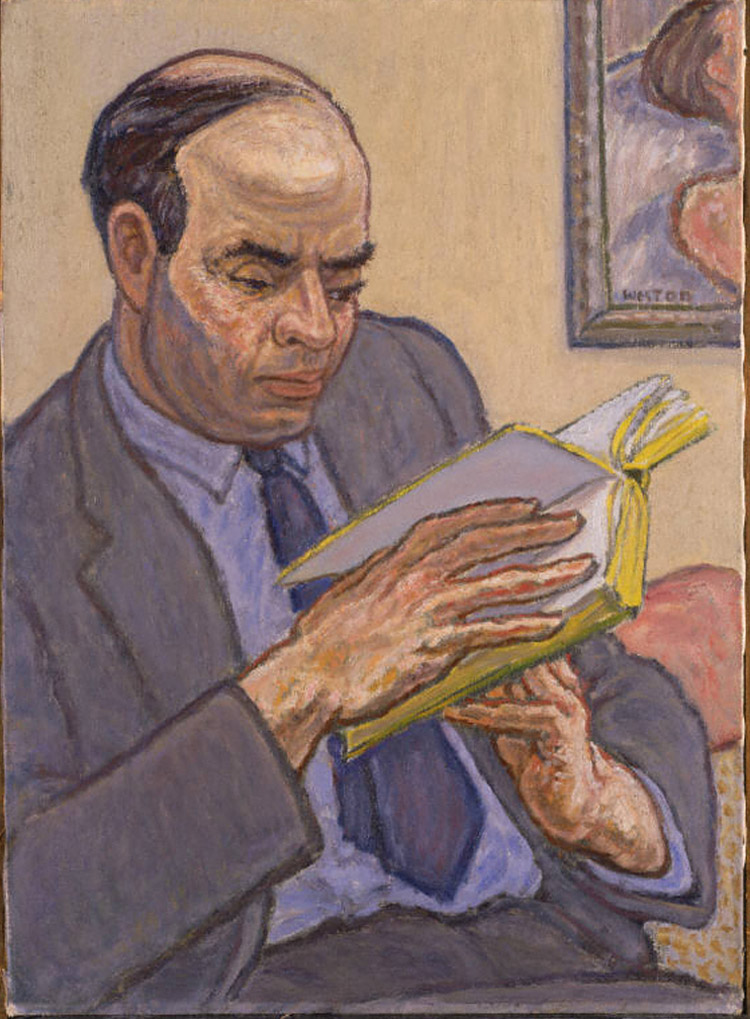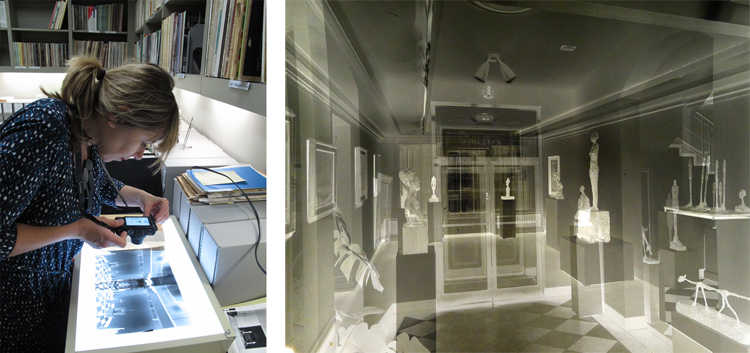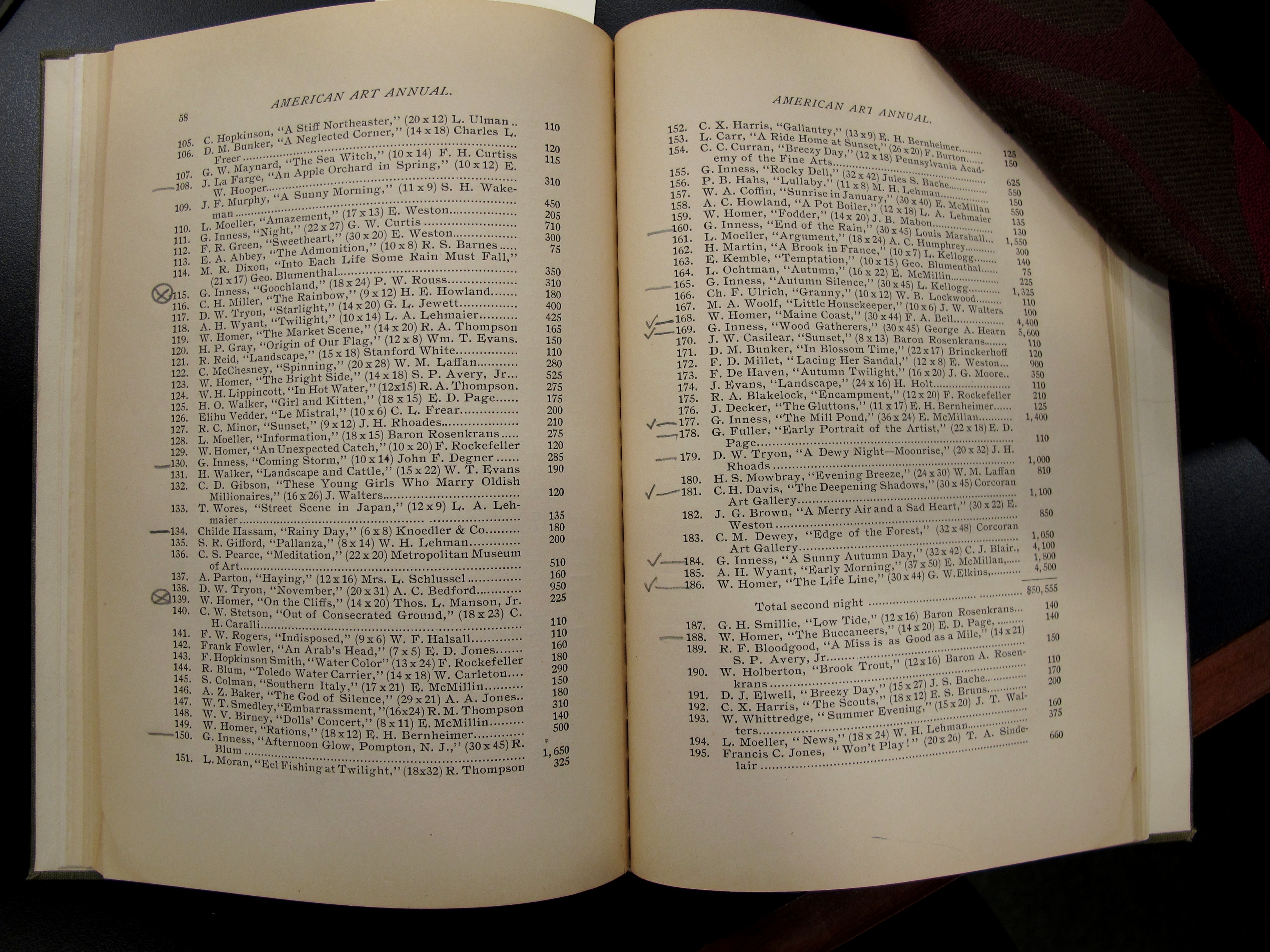
Harold Weston, Dos Passos Reading, 1933. Oil on canvas, 22.125 x 16 in. Acquired 1933. The Phillips Collection, Washington, DC

Vesna Pavlovic works on a light table in the archives viewing negatives (left) and shares a glimpse of her process (right). Photos: Sarah Osborne Bender (left), Vesna Pavlovic (right)
Upcoming 2014 Intersections artist Vesna Pavlovic, whose work will be on view in late May, spent last week in the museum’s library and archive, exploring not only the collection but also the space. Head librarian Karen Schneider guided her through the materials. Using installation photograph negatives from 1960s exhibitions by Alberto Giacometti and Mark Tobey, she observed the results of combining images. She also experimented with the transparency and light of our skylight from the courtyard above.
Duncan Phillips wrote in his books. Lists and marginalia abound in what remains of his library. In the course of cataloguing our copies of the American Art Annual, precursor to Who’s Who in American Art and the American Art Directory, I came across more of Phillips’s notes. Here in the first edition from 1899, he even created a key to his markings: “All marks indicate importance: Take notice – Know the picture – In our collection,” and subsequently put it to good use. Having marked items he did not acquire until years later, such as Julian Alden Weir’s Roses, acquired in 1920, he must have relied on this early volume as a significant resource, going back and annotating the content. I found additional markings in the 1916 and 1922 editions.